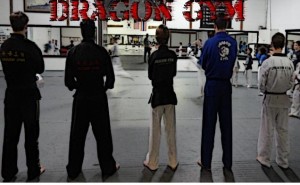




Last week, on Friday, my wife and I went out to lunch. This is a typical ritual for us. By the end of the week things are winding down at the gym and I can spare a few hours during the day to have lunch with her and my daughter. She had a morning appointment with the chiropractor so we ended up going for lunch earlier than usual.
Normally we head out to some place in Exton and eat around 2pm, but this day it was 12:30pm. Bad idea, the crowds were intense, but we made it work. At the end of lunch, I left them in the restaurant and went to bring the car closer. It was quite far (due to the crowds).
After returning I made a couple of observations.
1. People generally have a really poor awareness of their surroundings.
2. People need to calm down. There stores aren't going anywhere folks.
3. Courtesy has really atrophied in our society / community.
Let's talk about the 3rd. My seniors have oft lamented that "chivalry is dead". I don't know about that, and maybe that isn't a bad thing. There are some pretty archaic things that go along with "chivalry" and those are best left in the past. However, what about courtesy? I would like to think that is something we can all get back on board with.
Anyway, back to the lunch. When I was leaving, the line was long, blocking the door. No problem, "excuse me", audible and polite. The response: A sideways look and a slight roll of the shoulder. Now, luckily i'm still thin enough to get by, but the two inches you moved your shoulder is not enough to prevent me from invading your personal space to get by. So be it.
It was weird, but that's not what bothered me.
So I run across the parking lot, grab the car and head over to the restaurant. I hop out of the car to give my wife a hand. This is what I see, and my with recognizes the same.
There is a line of youngish (teens through 40s) people blocking the exit / main door to this place. Remember, these people are in line to order. Their hands are empty and are doing nothing but waiting.
Meanwhile, my wife has seen me pull up to the front and she tries to make an escape from the restaurant. She cannot. Remember, we have our daughter with us. She is an infant and needs to be carried. Not only do the folks refuse to budge a foot in line, but no one even offers to hold the door for her. By then, I've made it back into the place and help them get out and back to the car.
Was it a big deal. No, not really at all. However, this is something she notices over and over again when she is out and about the town running errands and such with the kid in tow. People are unwilling to budge and rarely willing to lend a hand.
Well, what does this have to with Martial Arts Training?
A lot actually.
Martial Arts communities tend to have tenets or codes that much of the training is based around. One of tenets is "loyalty to the nation" and another is "courtesy". "Loyalty to the nation" is not mere patriotism, but a recognition that we are part of a community and that the guild of martial artists as some, maybe even greater, responsibility to uphold the quality of that community.
Courtesy follows a similar direction. It is more that being polite. It is about respect, cooperation and social order.
In the dojang (the training hall) we have a lot of rules of etiquette, essentially quirky ways of doing things. Quirky, quite possible, but still important.
What are some of these things?
1. Addressing each other formally --> Sir, Ma'am, and / or traditional Korean Titles like Sahbumnim, or Kyobumnim
2. Bowing
3. The clothing we wear
4. The "language" of training
These are just a few examples but affect the students in an important way. The dojang is different, it is a different kind of place. As a result, students feel a sense of belonging. Here is a group of people that are otherwise very diverse, in all of the normal ways we track such things, but they have come together for a common goal and unified way of doing things.
This sense of community helps them to realize that they are doing something, that they are part of something greater than themselves. And, here's the important part. When the students feel that way, they start to expect more from themselves, both in and out of the training all.
When we start to expect more from ourselves we start to expect more from each other.
Maybe it's time to start expecting more from each other.
Which means it's time to start expecting more from ourselves.

Somnath Sikdar
Master Instructor, Dragon Gym
www.dragongym.com



